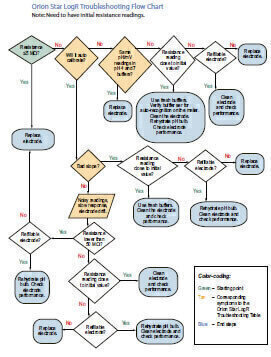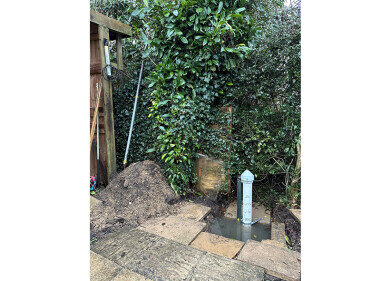Water/Wastewater
Applying Resistance Data for Electrode Troubleshooting
Sep 08 2010
To ensure accurate pH measurement, many laboratories perform regular testing of their pH electrodes. Typically this will consist of testing the electrode against known buffers and performing calculations of slope and offset, or monitoring the response time. The result can show faulty electrode performance but does not necessarily pinpoint the underlying cause. Often the user will go on to cleaning, rehydration, or other salvage attempts to no effect.
The Thermo Scientific Log R meters allow users to further refine their troubleshooting procedures, specifically monitoring pH bulb resistance, helping to identify electrical shorts or breakage. This
can shorten the troubleshooting process, rapidly identifying cases where cleaning and maintenance will not be able to rejuvenate the electrode.
Electrode Testing Information
Four Orion PerpHecT electrodes were used to generate resistance data:
• 9202BN PerpHecT combination pH glass-body electrode • 8272BN PerpHecT ROSS Sure-Flow combination pH glass-body electrode
• 8202BN PerpHecT ROSS combination pH glass-body electrode • 8220BNWP PerpHecT ROSS combination micro pH glass-body electrode
The test procedure focused on studying the effects of various electrode failures on the measured resistance and how that could be used to help diagnose electrode failures. All electrodes were prepared according to the electrode’s user guide. The initial membrane resistance was tested in fresh pH 7 buffer at room temperature. Then some electrodes were modified to simulate common sources of error such as a clogged junction, a fouled membrane and physical damage including a cracked bulb. After each modification, the new resistance readings were compared with the initial readings. For additional comparison data, aged and previously damaged electrodes were included in the testing.
From the test data three definitive resistance segments emerge when looking at the trending of the resistance of the electrodes.
• Resistance readings below 5 MΩ signal an internal electrode failure that requires electrode replacement.
• A resistance reading that is between half of the initial resistance to less than twice the initial resistance value signals that electrode can be cleaned and rejuvenated.
• For high resistance readings, a reading greater than or equal to twice the initial reading, cleaning and rehydration will be needed.
For sealed electrodes, the test data can denote dried gel in which electrode replacement is the re commended solution.
The data obtained allowed for construction of a table that describes the faulty electrode symptoms, resistance changes, possible causes and suggested corrective action. We generated a flowchart that condensed data from the table. Using these resources in tandem with observed changes in electrode resistance data allows for a focused effort in identifying the cause.
Conclusion
The availability of electrode resistance data from the Orion Star LogR meter presents a new method for electrode troubleshooting. This new diagnostic tool prevents incorrect measurements due to poor electrodes and wasted efforts to sustain unsalvageable electrodes.
To receive the complete application note on electrode troubleshooting; including the data table, flowchart and procedure; request the Reader Reply Card listed at the bottom of the page. Or go to www.thermoscientific.com/water and request Application Note # 72.
by Antonia Finlayson and Nadejda Vilissova Thermo Fisher Scientific
Digital Edition
IET 34.2 March 2024
April 2024
Gas Detection - Biogas batch fermentation system for laboratory use with automatic gas analysis in real time Water/Wastewater - Upcycling sensors for sustainable nature management - Prist...
View all digital editions
Events
May 05 2024 Seville, Spain
May 06 2024 Minneapolis, MN, USA
May 13 2024 Munich, Germany
May 15 2024 Lund, Sweden
May 15 2024 Frankurt-am-Main, Germany


















